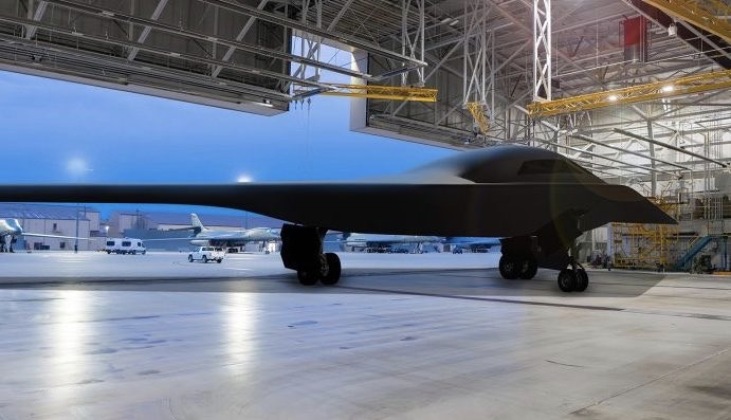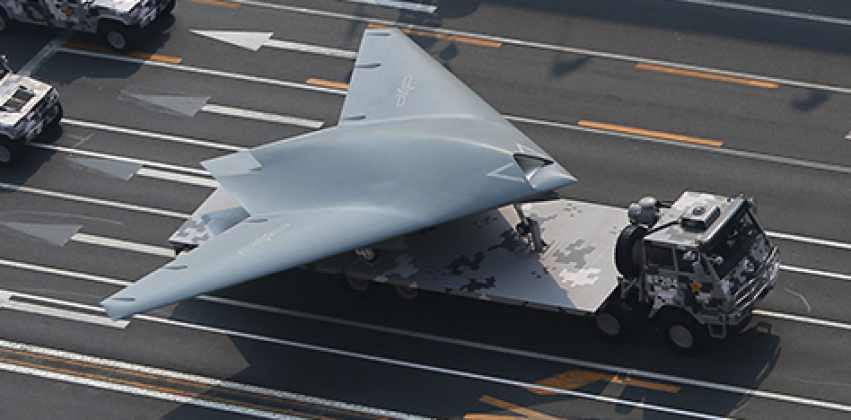By the early 2020s it was increasingly apparent that China and the Untied States had emerged in a league of their own in military competition, with the sizes of their defence sectors, military budgets, research and development and acquisitions all having no near competitors. This has been reflected in fields ranging from the capabilities of their aircraft carriers to their monopoly on meaningful production of fifth generation fighters. While one of the races to achieve a certain capability which has gained most attention has been that to field the world’s first sixth generation fighter, which no other competitor is considered even close to achieving, another has been the competition to field the first and most capable 21st century bomber.
Where during the Cold War only the Soviet Union and United States fielded intercontinental range bombers, Russia’s delays to its competing PAK DA program and focus on restarting production of modernised Cold War era Tu-160s has left China and the U.S. alone again with their respective competing H-20 and B-21 programs. The H-20 will be China’s first intercontinental range bomber, while the B-21 will replace the troubled B-1B and B-2 fleets in U.S. Air Force service and possibly form additional squadrons to expand the fleet. The former began development at the Xian Aircraft Corporation 603 Aircraft Design Institute in the early 2000s, shortly after China’s first fifth generation fighter the J-20, and is speculated to use the WS-15 engine which was confirmed to have begun test flights on the J-20 in January 2022. Where the B-21 is being developed primarily with bombing raids against China in mind, the H-20 is thought to have the American mainland as its primary target, which gives greater significance to the competition between the two programs.

The B-21 was initially expected to make its first flight in 2021, before this was delayed to 2022 and has now been confirmed to not fly before 2023. The first prototype began construction in 2019. The H-20 by contrast was widely reported in the first week of July 2022 to be set to imminently make its first flight, The Global Times state media outlet was among those to highlight that a new type of aircraft was set to commence its first flight shortly, one which other outlets highlighted would have “strategic, historic significance” which would aptly describe the country’s first bomber capable of reaching other continents. Should the H-20 fly before the B-21, it would only confirm concerns in the United States regarding a growing Chinese lead as the East Asian state’s defence sector is able to develop armaments very significantly faster, and with more revolutionary capabilities, than their American competitors. This would have implications for a range of programs, not least sixth generation fighters, where the possibility has widely raised of China fielding such aircraft first.

The H-20 and B-21 are expected to have stealth capabilities well ahead of other manned combat aircraft, and to see their airframes developed into variants for roles other than bombing ranging from airborne early warning to command and control, airborne refuelling, electronic attack, and maritime strike. Both are expected to use flying wing designs, much as the American B-2 from the 1990s did, although issues with the B-2 are expected to have led both programs to focus on ensuring that maintenance needs and operational costs do not become excessive which was the bane of the older program. Chinese combat aviation has considerable recent experience with flying wing designs, most notably the GJ-11 unmanned bomber, although the H-20 is speculated to integrate heretofore unseen features such as folding vertical tail surfaces.
As it has no predecessor in Chinese service, the H-20 is expected to be especially transformational and has long been particularly highly anticipated as a result, with a January 2021 official recruitment video for the Chinese Air Force teasing the first official rendering of the aircraft. Official artwork of the B-21 has also given clues as to some of its design features, with the bomber potentially being smaller and carrying less firepower than the B-2 to reduce costs. Neither bomber has seen their designs fully confirmed. Should the H-20 be unveiled in 2022, however, it could prompt the United States Air Force to bring forward plans to publicise its images of its own bomber to avoid appearing too far behind after setbacks and delays to the B-21 program.
